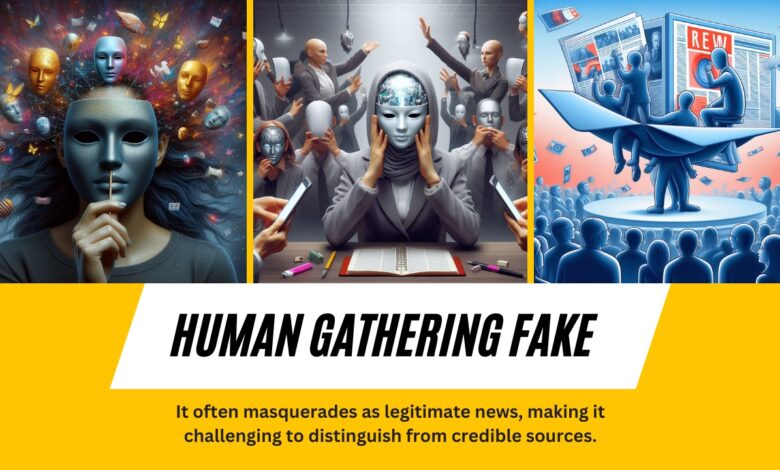Unmasking the Illusion: The Truth Behind Human Gathering Fake News

In an era where information spreads faster than wildfire, discerning fact from fiction has become a critical skill. The digital landscape is rife with misinformation, and one of the most insidious forms is human gathering fake news. But what exactly is it, and how can we navigate this treacherous terrain?
What Is Human Gathering Fake News?
Human gathering fake news refers to the deliberate creation and dissemination of false information by individuals or groups. Unlike automated bots or algorithms, this type of disinformation is crafted by humans who exploit our cognitive biases, emotions, and trust in social networks. It often masquerades as legitimate news, making it challenging to distinguish from credible sources.
The Anatomy of a Fake News Story
Let’s dissect a typical human gathering fake news story:
- Sensational Headline: These articles lure readers with attention-grabbing headlines. They play on our fears, curiosity, or outrage, compelling us to click and share.
- Emotional Manipulation: Fake news preys on our emotions. Whether it’s fear, anger, or empathy, these stories evoke strong feelings, clouding our judgment.
- Lack of Verification: Unlike reputable news outlets, fake news lacks rigorous fact-checking. It spreads like wildfire because it confirms our existing beliefs.
- Echo Chambers: Social media algorithms reinforce our biases by showing us content similar to what we already consume. Fake news thrives in these echo chambers.
- Confirmation Bias: Once we encounter a piece of fake news, we seek confirmation. We ignore contradictory evidence, perpetuating the illusion.
Why Does Human Gathering Fake News Persist?
Several factors contribute to its persistence:
- Profit Motive: Clickbait generates ad revenue. Fake news creators exploit this by sensationalizing stories.
- Political Agendas: Some spread fake news to manipulate public opinion or advance specific ideologies.
- Lack of Media Literacy: Many consumers lack critical thinking skills to evaluate information.
- Social Validation: Sharing fake news provides a sense of belonging and validation within online communities.
Debunking the Illusion: How Can We Fight Back?
- Media Literacy Education: Schools and institutions must prioritize teaching critical thinking, fact-checking, and source evaluation.
- Fact-Checking Tools: Encourage the use of tools like Snopes, FactCheck.org, and Google’s Fact Check Explorer.
- Diverse Sources: Consume news from multiple perspectives. Break out of echo chambers.
- Pause Before Sharing: Verify information before hitting that “share” button.
- Hold Platforms Accountable: Social media giants must combat fake news by tweaking algorithms and promoting credible sources.
Must Read: Exploring the Digital Footprint of @7_jgray: Insights and Highlights from Social Media
Conclusion
Human gathering fake news thrives because we unwittingly participate in its propagation. By becoming informed, vigilant consumers, we can unmask the illusion and protect ourselves from its harmful effects. Let’s champion truth over deception and reclaim the integrity of our information ecosystem.